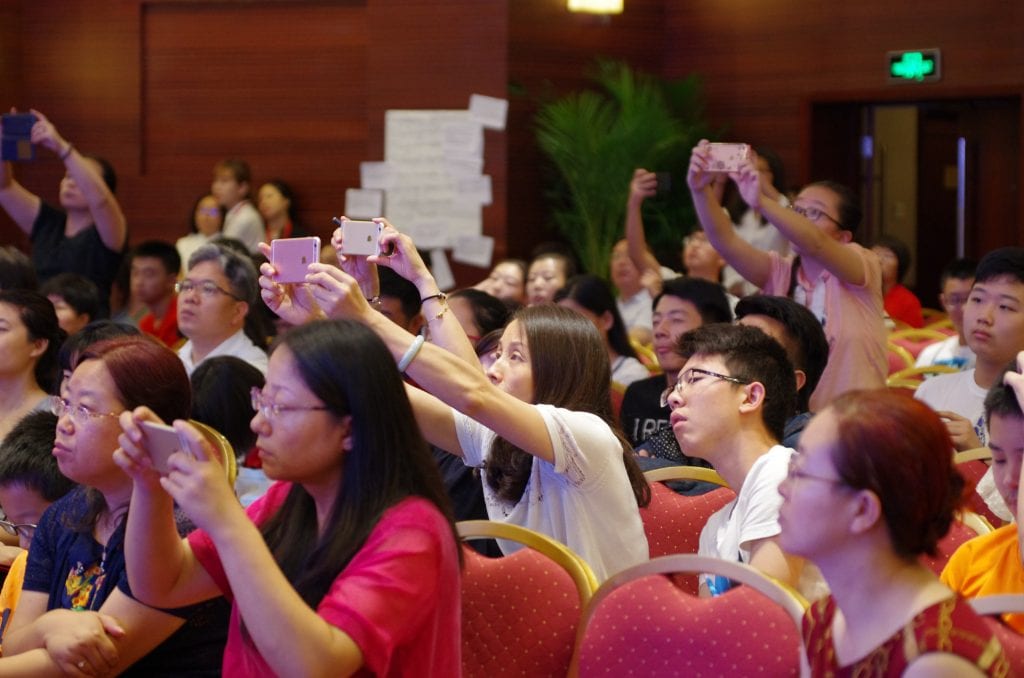Cambridge Network’s number one priority is equipping students with the knowledge, tools and confidence to ensure a positive experience. Studying overseas, especially during the most formative years of a young adult’s life, is a big step. Realistic expectations as well as best practices and a safe space for questions or concerns spells the difference between a life-changing, uplifting high school experience or a difficult, potentially unfulfilling time in the US.
In-Country Orientation happens twice per year – in the summer and winter for fall and spring students respectively, in select major cities of their home countries. In the past July, about 200 attendees participated in the orientations at Shanghai, Shenzhen and Beijing, China; more than 30 attendees joined the orientation in Seoul, South Korea and about 50 attendees joined the orientation in Ho Chi Minh City, Vietnam.
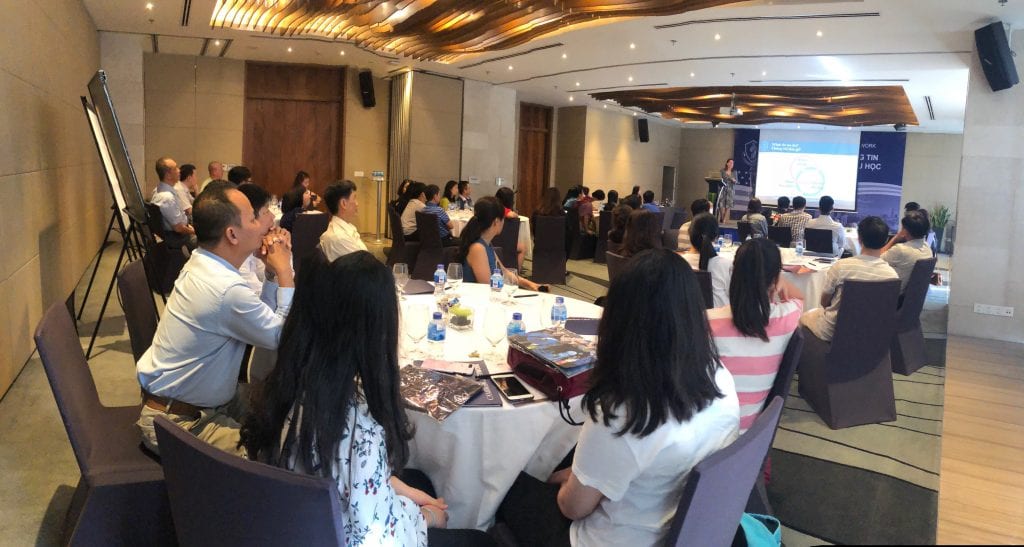
(The first In-Country Orientation in Ho Chi Minh City, Vietnam)
After weeks of collaborative work with teams in the US and overseas, the program is developed around key presentations and activities that help students prepare for their time abroad, provide tools to navigate common challenges and set expectations that will hopefully help students embrace the most rewarding, but often most difficult realities of studying abroad- new school, new (host) family, new country.
Most importantly, we want our families to know there is an army of dedicated professionals around the world supporting them throughout their journey. Let’s dive into some of the main points covered during In-Country Orientation:
1) Success in the American Classroom
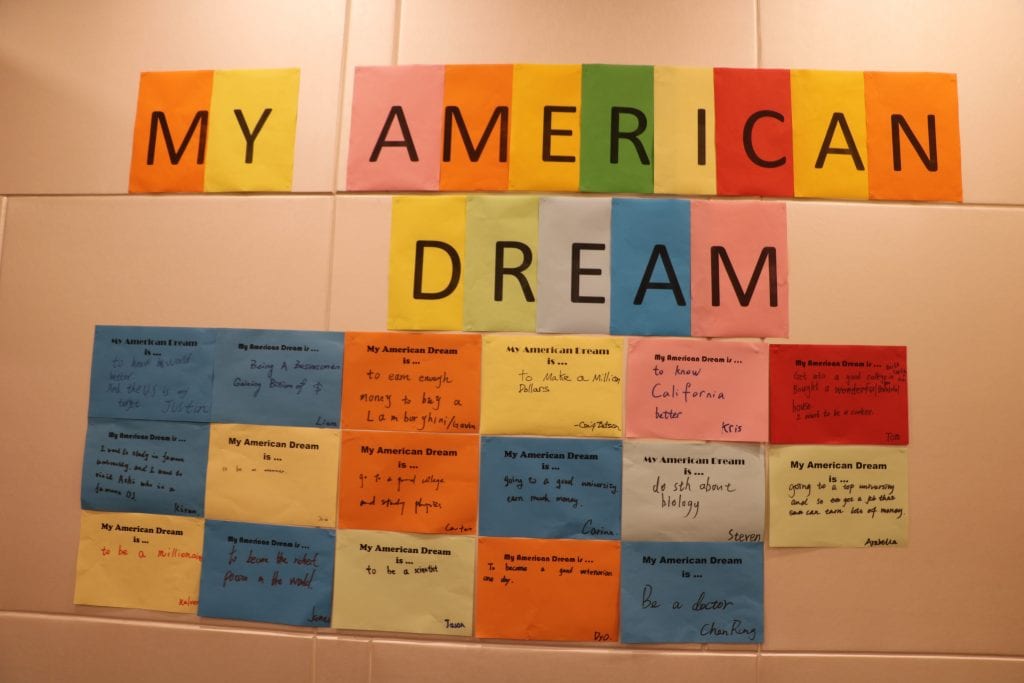
(Students write down their American dreams before the orientation to express their expectation for the upcoming new life)
Just as China and the US are literally a world apart, so are their classrooms and the way in which they operate. Chinese classrooms are often big, with a small class numbering in the 50-60 student range. Instruction is more traditional, grading is based heavily on tests and exams and the schedule is loaded with academics. This can prove disorienting for newly arrived students who have no understanding of what defines success in the American classroom. In-Country Orientation is the perfect opportunity to highlight these differences and help students succeed from day one.
With the help of videos and side-by-side comparison charts, our staff walks students and parents through a typical school day in America, what a classroom might look like during a student-led group discussion and the importance of building relationships with your teachers. We help students reassess their path to a strong grade through homework, group assignments, participation and, of course, tests and exams. We also highlight common challenges for international students, including, plagiarism, English language development and communication with teachers and peers.
Students got the chance to discuss course catalogs, how to comb through them and plan for their future academic goals with the help of their guidance counselor. Furthermore, we outline what services Cambridge has to support its students in their language development. We end our event with an in-depth discussion about college- how to plan, how to set attainable goals and introduce many families to the idea of the “best fit” over rankings on paper. The overall discussion focuses on the student’s success and walking them through important steps in the journey, from when they first walk into the school until they walk across the stage at commencement.
The independence that accompanies overseas study and the self-reliance needed to take it in stride is daunting for any adolescent. Taking the time to walk students through processes like course registration or educating families on the importance participation, both in and out class, eases some of the nervousness, developing confidence early on and empowering students with knowledge that will allow them to take ownership of their studies in the US.
2) Cultural Differences & Residential Life
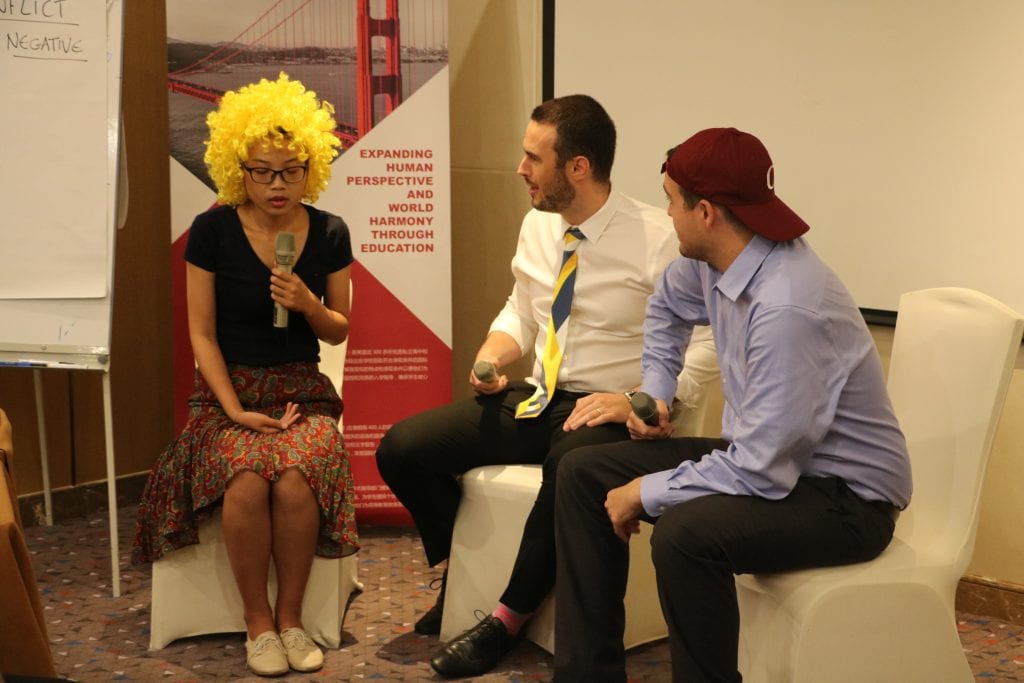
(An interesting skit to show the homestay life as a new student coming to the U.S.)
The classroom is just one component of studying overseas. Students will be in a new country, operating in a completely new culture and usually living with local family they have only just met. Needless to say, this adds another set of pressures and understandable sources of anxiety. We cover a wide range of topics to prepare students for situations they will run into, ways they can acculturate faster after arriving and how to best communicate with teachers, peers and homestay families.
Students learned quite a bit about the differences between the US and China on a cultural level, from communication styles and social interaction to differences in food and general laws (especially with respect to minors). We discussed the complexity of culture shock step-by-step, from excitement to anxiety, maybe even depression, to embracing the new place and culture as your own. The conversation brought up great questions like “When do you know for sure you’re homesick?” or “What if I never make friends?”. These questions led to more open discussion and honest exchanges on how difficult experiences help us grow. By the end of this talk, our students had a better understanding of how to move forward when confronted with this inevitable stage in their time abroad and parents were more informed about how to best support their student.
Another great activity was the conflict resolution workshop, which covered communication in the homestay in great detail. Students were presented with a scenario in their host family involving meals and were tasked with finding ways to communicate their concern in a polite, culturally sensitive way. Staff helped guide the discussion at times, but, overall, student groups took ownership of the discussion and came up with a wide range of ways to convey concerns with tact and diplomacy. This activity was successful and helped build the confidence of both students and parents- knowing they had the tools to think creatively in challenging situations and finding ways to grow from the experience despite being in a foreign place.
3) Team Building & a Taste of the Classroom
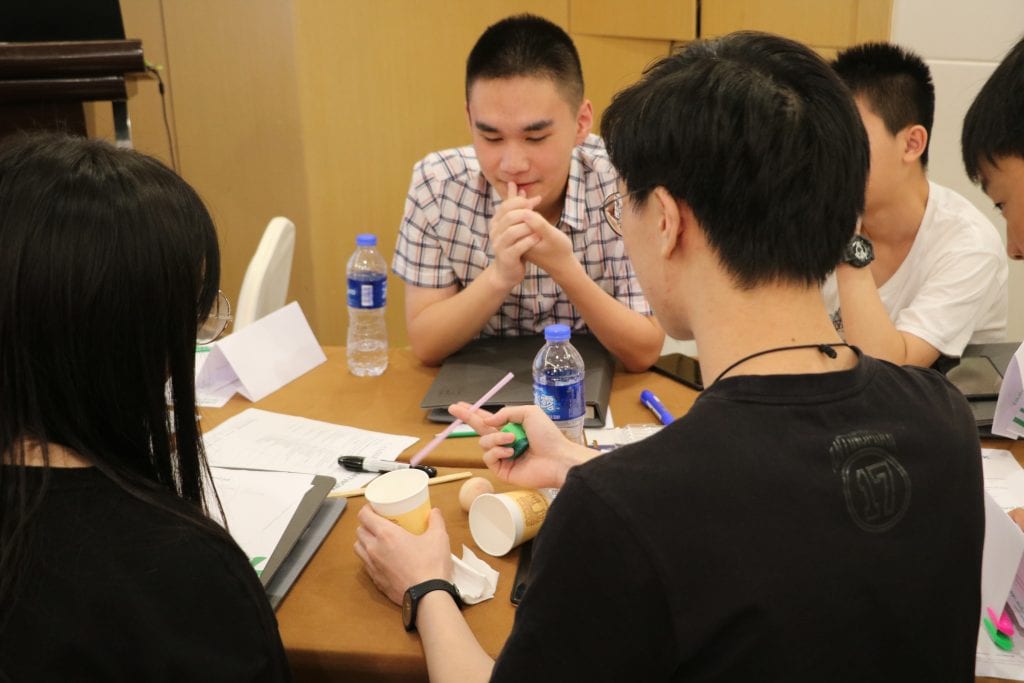
(Students work as a team to complete a simple project together for American classroom experience.)
Cambridge Network always aims to create a sense of community at In-Country Orientation while emulating many of the same traits as a classroom in the US. Our students are exposed to the interactive and participation-driven style of US classrooms with a demo English class.
The class sat in a semi-circle on the floor, with observant parents behind them, and read passages from Of Mice and Men by John Steinbeck. Every student read a line or two from the paragraph, reviewed key vocabulary and capped things off with an open forum about the imagery, important vocabulary (some students even acting them out) and the significance of the characters in American literature. The conversation picked up quickly and our goal was to show students that jumping into a stimulating talk, even if you have to muddle through challenges with language at first, can be packed with learning, growth and even some fun.
We also gave students a taste of the classroom in the afternoon by splitting them into teams and doing the Egg Drop Challenge. The Egg Drop Challenge is an activity used in middle and high school classrooms to introduce students to Physics most basic principle- gravity. Using only a few paper cups, some tape and other assorted items, students must build a device that will keep their egg from breaking or cracking when dropped from 10-12 feet. Here’s the catch- students can only speak English while they build their device and come up with an original team name. This activity continues to be a big hit! It challenges students’ ability to communicate and work collaboratively in an entirely different language. It tests their creativity and exposes them to the dynamics of group activities in US academics. Sometimes even parents make their own team and join in the fun!
4) Officially Joining the Cambridge Network Family
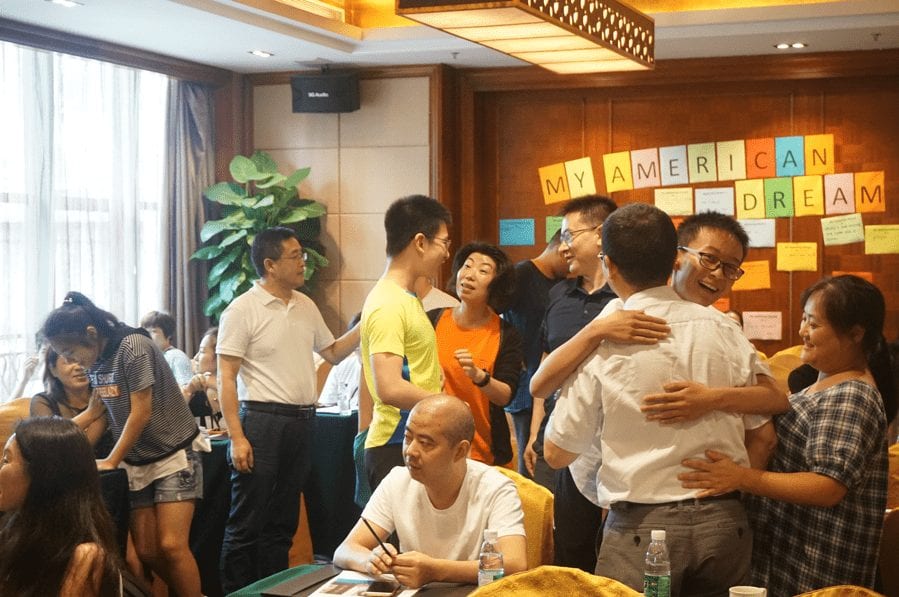
(Students give hug to their parents for appreciation at the end of the orientation.)
Cambridge Network is a family of companies, students, parents and education professionals around the world. We take great pride in prioritizing our support services and take the time to fully and formally welcome students and parents into our family at In-Country Orientation.
During the parents’ session, we give parents a breakdown of all the levels of support to which they have access throughout the year, including program support, family education advising and residential services. Moreover, parents learn about ways to stay up to date with their student and ways in which they can continue to support them from their home country. Most importantly however, the parents’ session provides a space for parents to address big questions and concerns they understandably have prior to seeing their teenager off.
The biggest treat is Cambridge staff getting the chance to engage and spend a great day with incoming families. Everyone is excited; everyone’s got big plans! Professionals at Cambridge, in most cases, sat in the very same seats as these students. They were once young pupils, excitedly sitting through an orientation, full of anxiety and excitement, counting the hours until the plane took off to study in a new place. The chance to chat with parents and students, build a connection rooted in empathy and at the end of the day shake their hands and confidently tell them they will be okay, makes the months of preparation all worth it. It is truly the highlight of the entire year’s work and kicks the school year off in the best way we know- as a community of lifelong, global learners.
